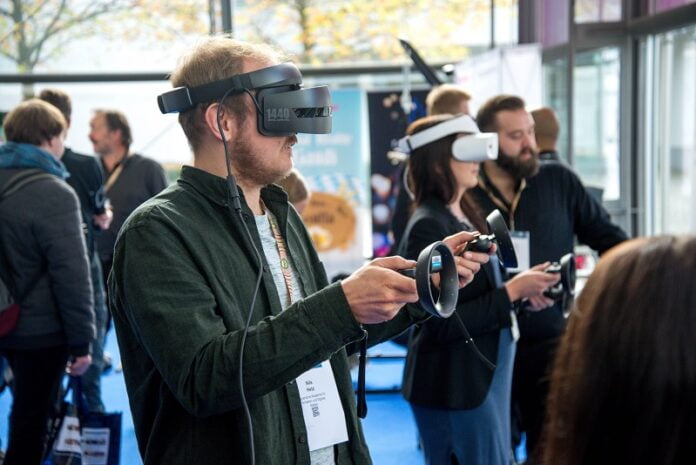Less than two years ago, the face of Facebook, Mark Zuckerberg, was beamed onto television, computer, and smartphone screens around the world as he explained his plans to shift his company’s focus to creating his vision of the metaverse. To demonstrate how serious Facebook was about this move, the company changed its name to Meta. While Zuckerberg may have been very clear in his own mind what the metaverse was, the rest of the world looked on in bemusement, no one really understanding what this new concept was. Evidence of this can be seen in the fact that Google searches for the term spiked immediately after the announcement as people went in looking for answers. Depending on who you asked, the metaverse meant many different things, but most opinions centered around either non-fungible tokens (NFTs) or virtual reality. The NFT element exploded in interest and popularity, thanks in part to its connection to cryptocurrencies and the blockchain – but interest in them declined just as quickly as the space became flooded with people trying to cash in on this new idea.
Virtual reality, on the other hand, has been a much slower burn. The technology predates talk of the metaverse and continues to sustain a more consistent level of demand than NFTs which have all but fizzled out.
In fact, VR appears to have outlived the metaverse, as even Zuckerberg himself seems to have cooled on the idea, with some news outlets going as far as to say that “the metaverse is dead”. This is, perhaps, backed up by the fact that Meta and its fellow tech giants have all switched their focus to artificial intelligence, the technology that is the next ‘Next Big Thing’.
But with the metaverse’s implosion and lots of excitement around chatbots that can hold a conversation with you, are we going to see virtual reality also die out?
Virtual Reality Gaming
Following the rebirth of VR technology in the 2010s, the biggest driver of demand for headsets has been gaming. It’s easy to see why as gaming lends itself well to virtual reality, far more than any other form of entertainment. Video games already give players the ability to move around a map and make decisions, unlike movies and TV shows which are generally one-way.
Many major gaming companies have invested heavily in virtual reality content too. PokerStars was one of the first iGaming companies to do this, creating a free-to-play platform that offers a social experience and real opponents in several individually-themed virtual reality environments.
Sony is another major investor in VR gaming. The Japanese company has recently released its PlayStation VR 2 headset, the successor to the PSVR, one of the best-selling consumer VR devices, despite it being limited to people who own a PlayStation 4 console.
The adoption of VR gaming is not as fast as many analysts predicted, but it is not dying as some expected. Instead, it may be that it finds an equilibrium as a smaller part of the overall gaming market that is enjoyed by fans of immersive titles and those that want their video games to be more physically exertive.
Commercial Environments
Some companies have developed virtual reality desktop applications where you can wear a VR headset to perform day-to-day computer activities like sending emails and creating spreadsheets. Instead of having a physical screen in front of you, they present a much larger virtual reality screen that gives you more room to place applications.
These have not been widely adopted because they are often cumbersome and don’t actually provide any benefit to the user. On top of that, it can be uncomfortable to wear a headset for an hour or two, let alone an entire working day.
However, virtual reality is proving useful in other commercial environments. For example, companies like BMW, Bank of America, and Uconn Health are all using VR headsets and specially-created applications to train their employees to perform tasks.
This is because it provides a much more realistic experience of performing physical tasks like working on a production line or performing surgery than simply reading or watching a video.
As with gaming, VR, in this specific scenario, is likely to stick around, even if we don’t see more hyped use cases come to fruition.
Therefore, we can expect virtual reality technology to still be here in several years’ time, even if it hasn’t exploded to near-universal adoption like some people predicted just a few years ago.





